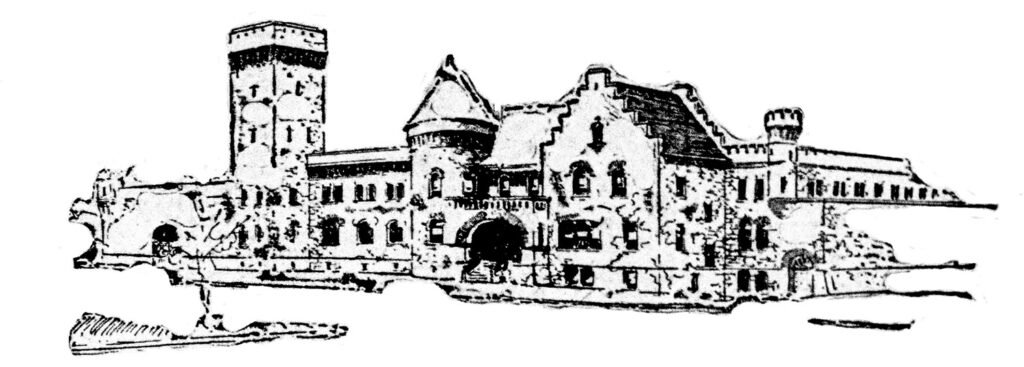
The background: Following the publication of G.L. Norrman‘s previous letter about the “model jail”, The Atlanta Journal solicited a response from Forrest Adair of the Fulton County Commission.
“I have not read Mr. Norrman’s card and do not intend to,” Adair claimed, adding: “The plans are not submitted for his approval and it is not desired.” Adair referenced Norrman’s harsh criticism of the Boys High School designs by GoLucke & Stewart, and also noted that Norrman was “very caustic in his criticism” of Bradford L. Gilbert, another sham architect who designed the Cotton States Exposition and English-American Building in Atlanta.
“I do not suppose Mr. Gilbert is losing any sleep over it”, Adair remarked, concluding that: “It seems to be a habit of Mr. Norrman’s and I do not see that we need to worry about his criticism in this case.”
In response, Norrman wrote another letter to the Journal, published on November 24, 1896, in an article titled “The Lively Jail Question”. Here Norrman admitted to his remarks on Gilbert, and alluded to his precarious financial state at the time, mentioning almost offhandedly that property he owned was being sold for taxes.
Indeed, Atlanta and the Southeast were in the throes of the Panic of 1896, and an undeveloped lot that Norrman had previously purchased in Inman Park was sold by the city marshal that same month for delinquent taxes.
“There are a great many beside myself in that fix”, Norrman stated, and he wasn’t wrong: a listing of properties sold for taxes in November 1896 spanned 11 pages in the Journal.
Norrman mocked Adair as “the supreme and mighty ruler of the county” and insinuated that his future political chances might be in jeopardy, but Adair — one of the most wealthy and influential men in Atlanta’s history — was re-elected to the county commission the following year.
Wilkins’ jail was completed in fall 1898, with the total cost exceeding $200,000. Jail officials began immediately complaining about its poor design and shoddy construction quality, and just weeks after opening, 4 prisoners escaped from the structure.
Adair and the county commissioners blamed the jailbreak on the sheriff, John W. Nelms, who in turn blamed the jail’s design, noting that there had never been an escape from the old facility.
“The jail is built something on the order of a hotel”, Nelms complained to The Atlanta Journal. “It is scattered over a large area, and in such a way that even with a guard to work every floor there is time for prisoners to work.”
Needless to say, Norrman’s objections were valid.
Norrman’s remarks:
To the Editor ofThe Journal.
My business is not only that of an architect, but also that of an architectural critic, and I am so taken and accepted by all thorough and regularly educated architects, as well as by people of culture in general.
Besides the criticism which Mr. Adair refers to, I have written many others. Sometimes I write because I am paid for it, sometimes because I think it will be interesting to my profession to know what is going on, sometimes I write because it is interesting to myself.
My reason for writing a description of “A Model Jail” in Saturday’s Journal was the very apathy which Mr. Adair speaks of, from which I think that he and everyone connected with the erection of the new jail should be aroused.
For a set of men who are entrusted with public funds to spend them so recklessly and carelessly, even if there is no individual gain at the bottom of it, and “lose no sleep over the matter” is not fair to the taxpayers of the county. Those whose property is being sold for taxes, and there are a great many beside myself in that fix, lose a great deal of sleep over the matter.
I know perfectly well that Mr. Adair is the supreme and mighty ruler of the county, and there is no way of stopping the erection of such an expensive monstrosity as the “Model Jail,” unless the grand jury takes a hand in the matter (in which case Mr. Wilkins will have no “merit” to stand on).
While Mr. Adair is not losing any sleep over the matter now, he may when the next election comes round, and I think that the people who are sold out for taxes will be awake also.
Those who are not familiar with architecture could not possibly know how badly they are taken in unless their attention is called to it by some architect, so I hope you will pardon me for taking up so much of your valuable space about this matter.
G.L. NORRMAN